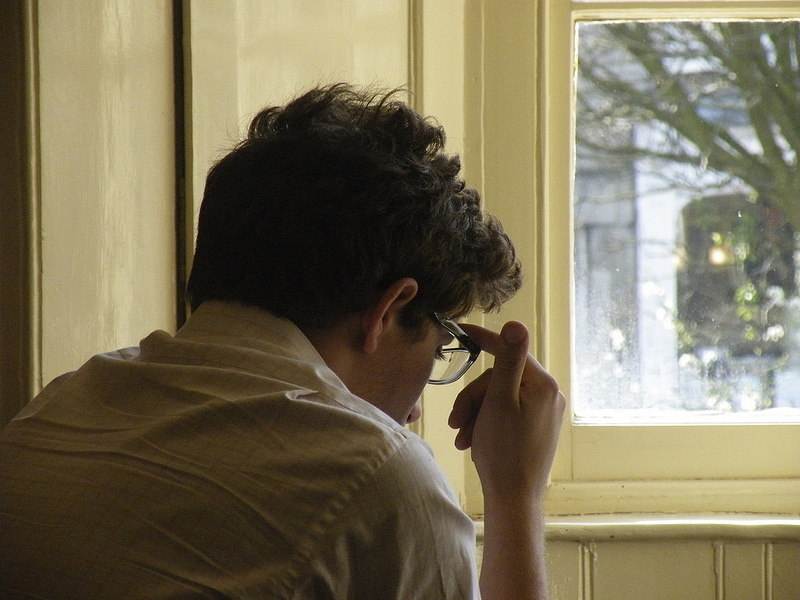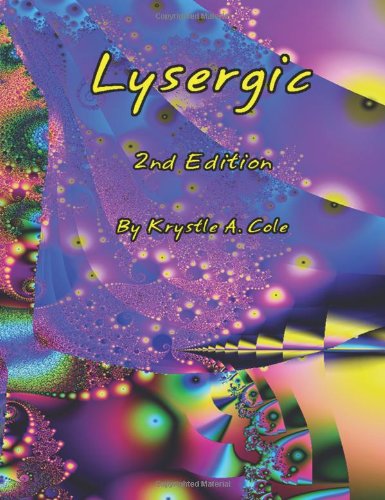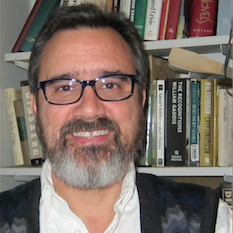TW Column by David Biddle
How Self-Publishing Taught Me Patience

Coming Soon: TW's Winter 2014 issue launches next week with a focus on literary critics and quality. Here, David Biddle offers a taste of what's to come with his spirited defense of indie literature. Let the games begin!
I tried reading a good fifty self-published e-books in 2013. I finished five. I also began reading fifty books published the old-fashioned way. Of those, I finished five.
Okay, I’m a slow reader. Ten books a year is about my average. I’d do better if I weren’t on Facebook and Twitter every day; it also took time to read all the books I didn’t finish. But I guarantee I’ll start more self-published books in 2014—and I bet I’ll finish more than five. The five indie books I finished were as good as, if not better than, Jennifer Egan’s A Visit from the Goon Squad or even George Saunders’s Tenth of December—both of which I read early in 2013.
You see, I’ve figured something out about indie work: It’s a different beast than the stuff put out by the likes of Penguin, Hachette, and HarperCollins. The trick is to learn to read indies in a different way than you would slicker books that have been passed through the filter of a dozen publishing professionals.
The trick is to become a patient reader.
I’ve been buying indie books all over the place for the past few years. More than half the work on my e-reading devices is self-published. Since I’ve got three books of my own out there, I need to pay it forward and buy work by other indie authors. The thing is, no matter how much I wave the “Go, Indie!” flag, I’m ultra-discriminating about what I read. Cognitive dissonance has held me back, bogged down as I’ve been with the following logic: Why read self-published books when I still haven’t read all the David Foster Wallace, Toni Morrison, and Haruki Murakami in the world?
 Yes, I am that kind of asshole book snob.
Yes, I am that kind of asshole book snob.
Fortunately, this ridiculousness began to change in 2012, when I finished Krystle Cole’s self-published account of the time she spent, from 2000 to 2003, connected to Gordon Todd Skinner and the new psychedelic manufacturing vanguard in the United States. Lysergic is an extremely personal story of an intelligent young woman coming of age during some of the most bizarre drug experiences I've ever read. I have no doubt the raw power of this story would have been turned to mush by mainstream publishers.
Since reading Lysergic, other indie books grabbed and stuck with me in 2013. Last summer, I read Nancy Bevilaqua’s Holding Breath: A Memoir of AIDS’ Wildfire Days, and this one clinched the lesson: Indie literature is no different from indie music or indie film. Independent art of all kinds is independent because the artists control every aspect of production—and that’s the point.
The magic of indie art is that it feels more authentic and down to earth. Think hand-held cameras and living room recordings. With literature, of course, authenticity is a tricky thing. It comes through word choice and honest description. Literature happens not because editors and academics give it the nod, but because a writer puts her whole self on the page—as in Holding Breath, a heartbreaking love story.
Bevilaqua, a freelance author and poet, told me in a recent e-mail interview that she chose the self-publishing route because she wanted to make all the calls on her book. For instance, she included a great deal of poetry in the text. Even her simple narrative observations are highly charged and lyrical:
Every so often I find a sick or dying bird on a sidewalk…. [t]hey’ll look up into my eyes for a moment as if they’re trying to gauge what my intentions might be, and as if they’re saying, Do whatever you’re going to do; I’ve given up.

It's this unvarnished approach to storytelling that distinguishes the best indie books from anything else I'm reading now. My response is the same as when I listen to indie rock or watch a Sundance Channel movie. It can take awhile for a story to get rolling. There may be goofy word choices, strange psychological details, unstructured plot lines, rambling descriptions of towns or homes or farms—but so what? Great indie fiction is brightly colored with the obsessions of authors who have handcrafted their books from inception to online sales pages.
I’ll even go out on a limb and say that Fifty Shades of Grey, the mother of all self-published e-books, is brilliantly written. Yes, it’s full of clichés and repetition, but the bold and breathless innocence of E.L. James’s language matches the bold and breathless innocence of her narrator.
I know I won’t get far claiming that Fifty Shades is “literary.” Indie books have become a threat to mainstream book publishing for a host of reasons, including the fact that breakout bestsellers like James’s trilogy or Hugh Howey’s Wool appear to be hooking readers far more successfully than the supposed pros in the business have been able to. The debate about indie quality is contentious precisely because mainstream publishers seem so out of touch with what actual customers want.
But the most surprising result of my 2013 year of reading is how much I’ve learned from indie authors about reading all literary writing.
Take Tao Lin’s Taipei, one of the most notorious novels of 2013. Published by Vintage and not technically an indie work, Taipei polarized many people in the book world because of its deadpan “Asperger’s” style and plotless narrative. I haven’t finished Taipei yet—and I’m not sure I will—but I’m fascinated by Lin’s use of language.
Lin and young indie author Marie Calloway, some of whose stories in what purpose did i serve in your life also captivated me in 2013, are at the forefront of what’s been dubbed “Alt-Lit.” At this point, Alt-Lit is no longer a new phenomenon, but the centerpiece of the indie literary fiction movement.
Micro publishers like Muumuu House, Tyrant Books, Scrambler Books, and Tiny Hardcore Press are rounding up young literary authors and giving them launching pads for their work. Writers like Roxane Gay (who is everywhere on the Internet these days), Scott McClanahan, and Megan Boyle are publishing strange, sexy, and linguistically odd fiction through these houses and others like them—all on their own terms.
Indie literature is popping up all over online, far from the madding Amazon crowd, including in magazines like TW. In an article last fall, Flavorwire called it the “Golden Age of Indie Publishing,” noting that “this is an exciting time to be a fan of literature.” The literary elite and money grubbers are probably still winning, but it’s only a matter of time before readers figure out there’s more good stuff available beyond the pipeline of corporate publishing.
This year, I’m looking forward to tackling writers like McClanahan and Boyle and Gay. I still need to finish Anna Karenina (which I started last February). And Murakami’s latest is scheduled to publish this August. I’ll always be a snob about books, but I plan to keep downloading independent work, acting a little less like one with my fellow indie writers.
Who knows, maybe I’ll even bust out of the ten-books-finished-a-year thing. I’d really like to hit twenty. Now, that would be an accomplishment.
Books I Finished in 2013
Indie Self-Published
- Almost Home: The New Paltz Novel by Frank Marcopolos (2013).
- Only Shot at a Good Tombstone by Robert R. Mitchell (2010).
- Holding Breath: A Memoir of AIDS’ Wildfire Days by Nancy Bevilaqua (2012).
- Jane of the Jungle by Jane Baskin (2011).
- Breakers by Edward W. Robertson (2012).
Mainstream Published
- A Visit from the Goon Squad by Jennifer Egan (Anchor, 2010).
- Jazz by Toni Morrison (Knopf, 1992).
- Tenth of December by George Saunders (Bloomsbury, 2013).
- 1Q84 by Haruki Murakami (Knopf, 2011).
- Bad Behavior: Stories by Mary Gaitskill (Simon & Schuster, 1988).
Publishing Information
- “The Best Indie Books of 2013” by Lauren Oyler, Dazed Digital, December 12, 2013.
- “25 Independent Presses That Prove This Is the Golden Age of Indie Publishing” by Jason Diamond, Flavorwire, October 1, 2013.
- “The New Bad Kids of Fiction” by Stephen Marche, Esquire, June 10, 2013.
- Lysergic by Krystle Cole (2007; second edition).
Art Information
- "Reading" © Kate Hiscoc; Creative Commons license.
 David Biddle is TW’s “Talking Indie” columnist. He’s the author of the novel Beyond the Will of God and several collections of short stories. As a freelance writer, David has published articles in Harvard Business Review, Philadelphia Inquirer, Huffington Post, Kotori Magazine, and BioCycle.
David Biddle is TW’s “Talking Indie” columnist. He’s the author of the novel Beyond the Will of God and several collections of short stories. As a freelance writer, David has published articles in Harvard Business Review, Philadelphia Inquirer, Huffington Post, Kotori Magazine, and BioCycle.
He's currently working on a cycle of novels about sex, love, and family life near the edge of Philadelphia.
For more information about what else he's up to, see David Biddle’s website.
